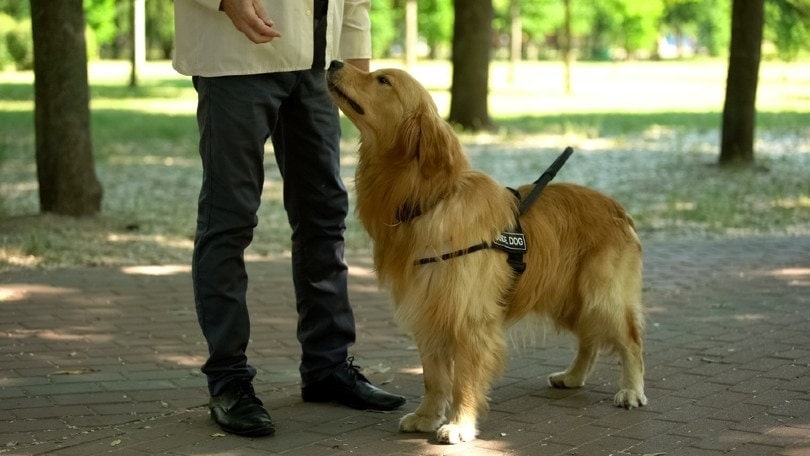How to Tell If Dry Dog Food Is Bad: 9 Things to Look For
Updated on
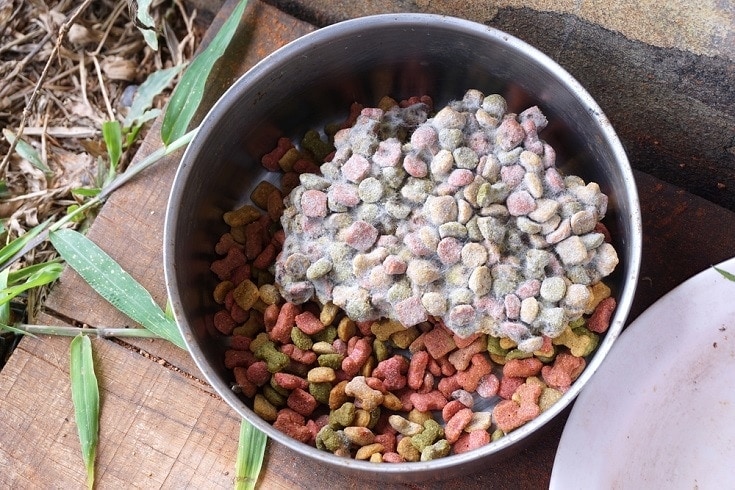
We all know that dog food doesn’t have an unlimited shelf life, so it’s crucial to monitor dog food to ensure it’s still good before feeding it to our furry friends. This is especially important if you buy large bags of food to save money and limit trips to the store. Dog food can go bad before or after being opened, so it’s essential to your dog’s health to know what to look for. Here are the ways you can tell if your dog’s food has gone bad.
How Long Is Dog Food Good For?
It’s essential to know the shelf life of dog food before and after it has been opened. This will help you determine if your dog’s food is still good without looking for other signs of problems.
Unopened kibble is good for up to 18 months but should be kept in a cool, dry location to prevent mold and bacteria growth. Once opened, dry dog food is only good for around 6 weeks. After 6 weeks, it can become stale, lose nutrients, or begin to grow mold or bacteria.
The 9 Things to Look For to Tell If Dry Dog Food Is Bad
1. Expiration Dates
This might seem like a no-brainer, but it’s wise to check the expiration date on a new bag of dog food and record it. As with any food intended for human consumption, it is very important to look at your dog’s food labels for a “best before” or “best by” date. The dates are typically located on the bottom of the bags or cans.
Having the expiration date to refer back to can help you ensure the food is still good. Some pet stores will put dog food that is nearing its expiration date on sale. If you stock up on dog food when it’s on sale, check the expiration date to ensure that you aren’t buying food that you won’t be able to feed to your dog safely.
Consider the time frame that you plan to use the food, calculating that the food should be opened and fully consumed before the expiration or best-before date. It is very important to always double-check the dates on each package before opening it.
The expiration date on the package is an estimate of the stable shelf life of unopened products. Once you open the product, oxygen, moisture, and environmental microbes will start to degrade the food at a faster rate. That is why it is very important to consider the integrity of the packages. The food packages should be sealed without any tears or punctures. The bags should not look swollen since it’s a sign of contamination.
2. Odors
As silly as it may sound, it’s a good idea to get familiar with how your dog’s food smells when it’s fresh. This will not only allow you to monitor if it’s still good once opened, but it will also let you know if something’s up when you open a new bag that may have started to turn for some reason.
As dog food begins to go bad, it can develop a sour or rancid odor, which will quickly become obvious, even if you’re unfamiliar with the typical smell of your dog’s kibble. Unpleasant odors indicate the presence of bacteria, decay, or mold growth.
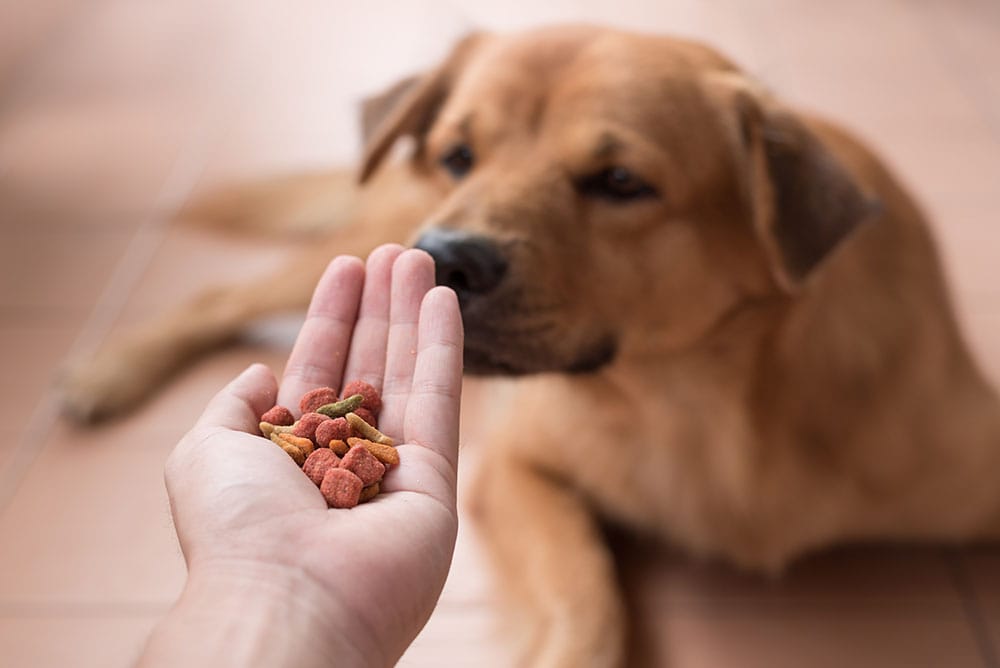
3. Pests
It can be challenging to keep pests out of your dog food storage, no matter where you keep it. Ants, flies, mice, rats, and roaches are all big fans of dog food. Even wildlife, like possums, stray cats, and dogs, can threaten your dog’s health if they get into their food.
If you find pests in your dog’s food, it’s a good idea to toss the food, come up with a better storage plan, and then replace the food with fresh, unopened dog food.
You should also inspect the food bowls for indications of pests, like chew marks, feces, dead insects, and larvae. Insects and rodents can carry several diseases, which can be dangerous or deadly to both you and your dog.
4. Moisture
Like most food, dog food breaks down quickly in the presence of moisture. If your dog food bag was dampened by the sprinkler or a grocery spill, you should check the food to ensure it is still dry. Most dog food bags are made to keep external moisture out.
However, if you know your dog’s food got wet somehow or it’s exposed to high levels of humidity, like from being kept in a garage or shed, it’s very likely the shelf life of the food will be reduced. Food that gets wet is only suitable for a few hours. Products in a damp environment may stay good for a while, but they will almost certainly not make it to the 6-week shelf life.
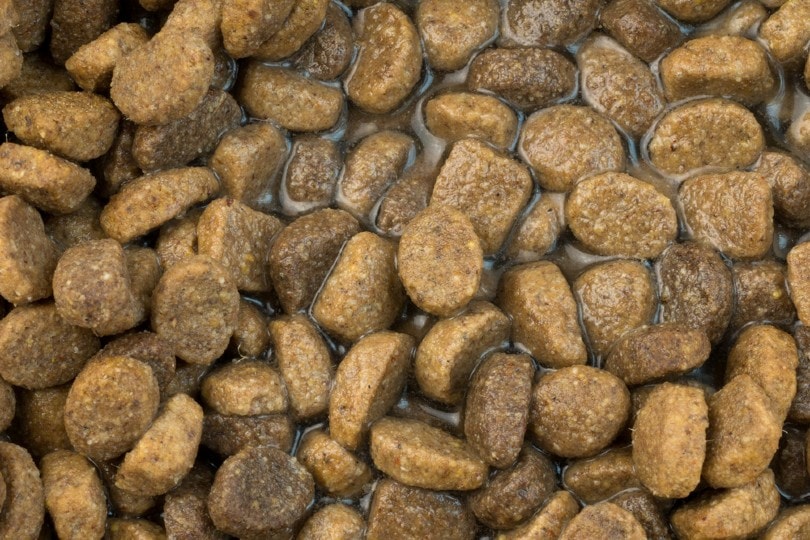
5. Mold
Mold can grow on dog food due to moisture or the presence of mold spores. Mold spores can get on dog food during the manufacturing process or once you open the bag. Keeping your dog’s food closed up tightly can reduce mold growth, but mold will begin to grow on your dog’s food eventually.
Keep an eye out for white or gray patches of mold growth on the kibble pieces. In severe cases, the kibble pieces can stick to each other because the mold is spreading and causing multiple pieces of food to become sticky. Moldy dog food should be thrown away immediately. Do not attempt to pick out the moldy pieces, and continue to feed the pieces that don’t appear moldy.
6. Heat Exposure
Like moisture, heat can also cause the rapid breakdown of dry dog food. Keeping your dog’s food in an environment that gets hot, like a garage, a shed, or in direct sunlight, can cause it to spoil much more quickly than it would in a cooler environment.
Heat supports bacteria growth and can also encourage the growth of certain types of mold. Warm environments may also be more likely to attract pests looking for a warm place to stay and a free meal. On top of these concerns, high heat exposure can lead to a breakdown of the nutrients in the food.
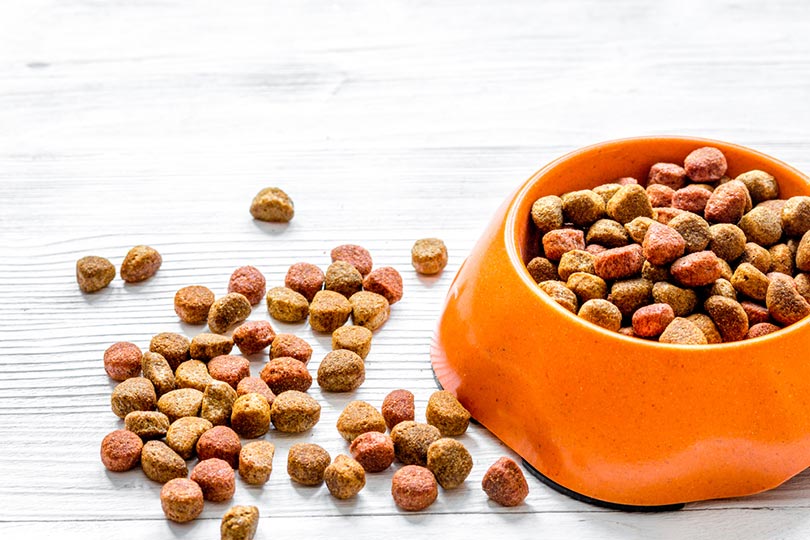
7. Improper Storage
Hot and humid environments are unsuitable for storing dog food. The other significant consideration when storing your dog food is to ensure it’s not always exposed to the open air. Not only will air exposure lead to staleness, but it will also encourage mold and bacteria growth. Dog food bags are typically not made to store dog food once open, so it’s a good idea to transfer the bagged food to an air-tight container that will protect against air exposure, moisture, and pests.
It is better to keep the bag of food inside the container, rolling the top tightly, sealing it with a clip, and then closing the air-tight lid. Once the bag is empty, ensure the container is fully emptied, washed, and dried.
Some owners have the bad habit of emptying the kibble straight into the container and just topping it up with new kibble; the remnants of the old batch can cause the new food to go rancid or stale faster. Ideally, dog food should be kept indoors, but avoid keeping it in places that may be warm and humid, like a laundry room or bathroom.
8. Dog Refuses to Eat
Dogs have an extremely sensitive sense of smell. If your dog’s food has begun to go bad, your dog may simply refuse to eat it. Your dog will be able to smell that the food is “off” before you might notice it.
Dogs stop eating their food for several reasons, so don’t always assume that your dog’s food is going bad. If your dog stops eating, a vet visit may be in order to rule out medical problems, but it’s still a good idea to double-check their food to ensure it’s still within date and not showing any signs of going bad.
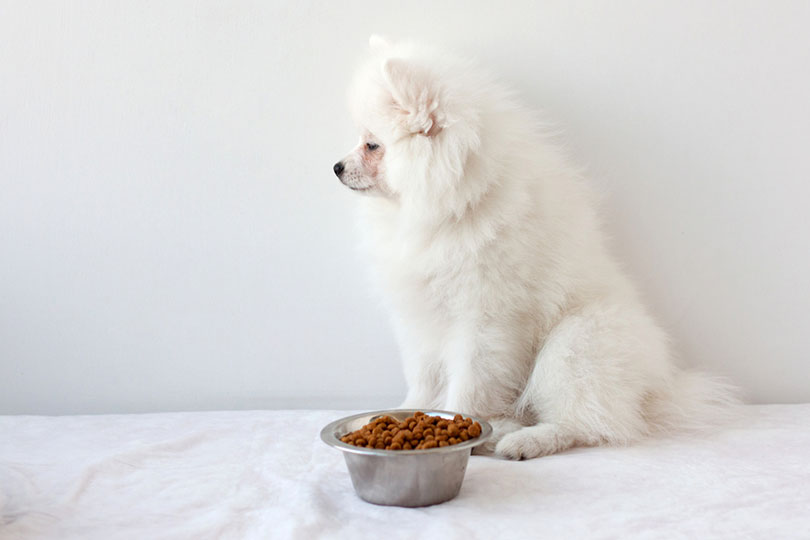
9. Dog Gets Sick
As sensitive as a dog’s sense of smell may be, many dogs will eat rancid food, and the bacteria, mold, and exposure to waste from pests can make them sick.
If your dog is getting sick after meals, a veterinary check-up is necessary to rule out other problems. However, it’s also a great time to check over your dog food supply to make sure the food still looks safe, smells normal, and is in a container that doesn’t show evidence of pests.
Conclusion
Dry dog food doesn’t have a finite shelf life, and knowing when it’s going bad can help you protect your dog from illness. Feeding your dog food that has not exceeded the expiration date and not beginning to break down also ensures they receive adequate nutrients. The nutrients in dog food will break down as the food decays, and the process accelerates in the presence of heat and moisture.
- Related Read: How to Tell If Wet Dog Food Is Bad: 7 Vet Reviewed Signs
Featured Image Credit: SOORACHET KHEAWHOM, Shutterstock


